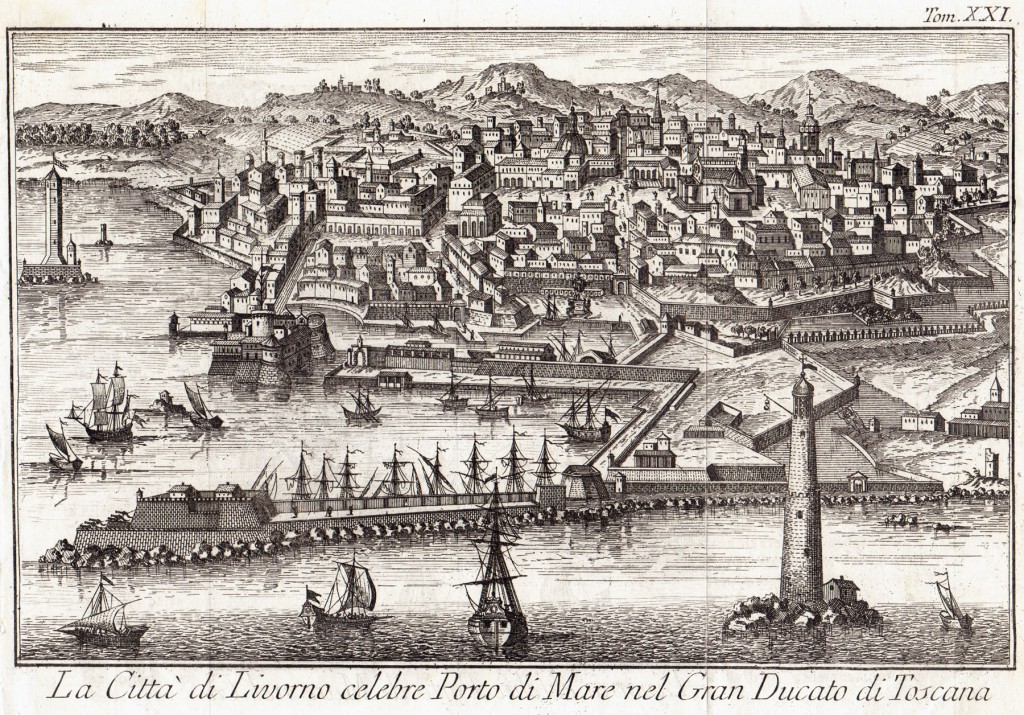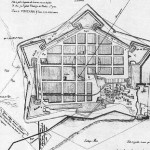History
From the past to the present: the palaces, the theaters, the port.
A new Venezia.
Already in the times of Cosimo I, due to the decline of the Pisan port, which was almost completely buried, Livorno was seen as a major maritime port under the control of Florence. However, the idea fully took shape with his son, Francesco I, who commissioned the Court Architect Bernardo Buontalenti to design a great city in 1576. Based on Buontalenti’s idea, a pentagonal-shaped city was realized, with the base to the north, and the Fortezza Vecchia to the west and the Fortezza Nuova to the east at the extremities, and the vertex to the south. The foundation of the new city, the laying of the first stone, dates back to 1577. The goal was to enhance Livorno as a center of storage and exchange between the Muslim Mediterranean and the ports of northern Europe.
Soon, attracted by a series of benefits and privileges promoted by Grand Duke Ferdinando I and the reform of the customs system that made Livorno a free port, the population began to grow, and the settlement proved insufficient to contain everyone. In less than 40 years, it became necessary to provide the city with a new neighborhood that would meet the housing needs of a rapidly rising merchant class whose businesses were directly connected to the port.
Around 1630, Grand Duke Cosimo III decided to create a new neighborhood and entrusted the design to the Sienese architect Giovanni Battista Santi. In the chosen area, between the Navicelli Canal and the external moat of the Buontalenti fortifications, construction work began on the new city on the water, with warehouses and houses located right behind the port. These structures could accommodate the interests of the many merchants who transferred the management of their commercial transactions to Livorno.
The difficulty of building this new neighborhood in an area partly occupied by the sea required the use of techniques and labor imported directly from the Venetian lagoon, which eventually led to the neighborhood being identified as “Venezia Nuova” (New Venezia). When, at the end of the 17th century, the neighborhood doubled its size with the demolition of over half of the Fortezza Nuova, large warehouses were created below street level. Through the canals, large barges (the “navicelli”) arrived with goods from the nearby port.
In the 18th century, Nuova Venezia became the main commercial district. Consuls and important international merchants chose it as their residence. The spacious cellars of their palaces were filled with goods of all kinds and origins, waiting to be packed and shipped by sea to various destinations. The period of greatest splendor was when Cosimo III allowed the establishment of some religious orders: the Trinitarians and the Dominicans. With the help of their mother houses and wealthy patrons, they built beautiful churches adorned with Baroque furnishings, statues, and stuccos, such as the Church of San Ferdinando Re and the octagonal-shaped Church of Santa Caterina da Siena, known as the Church of the Dominicans.
In the 19th century, transformations due to steam navigation and the development of the bourgeois city beyond the surrounding moat changed the neighborhood. Wealthy merchants abandoned Venezia Nuova, and they were replaced by families of dockworkers and port workers, giving the neighborhood a more picturesque and popular character, but unfortunately, also a poorer one. The deterioration of sanitary conditions led to a series of cholera epidemics, so in 1889, it was decided to bury the ancient Navicelli Canal, the source of the disease, and transform it into what became Viale Caprera. After the destruction of World War II, only at the end of the 20th century did some recovery and enhancement operations of the neighborhood begin, including the restoration of ancient palaces and, above all, the ongoing project to reopen the initial stretch of the Navicelli Canal.
Despite the many changes it underwent, the charm of the Venezia neighborhood always remains intact. Walking along its streets, along the canals, one is seduced by the evocative atmosphere of this special place, which, as if by magic, leads us to imagine the resounding echoes and colorful chatter of those who, over time, lived and inhabited a unique maritime district in the world, characterized by authentic beauty and a decadent charm that tell many stories in one story, that of Livorno.












